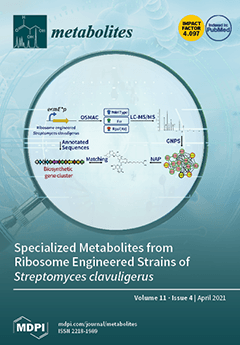The objective of the present study was to evaluate of serum metal levels in COVID-19 patients with different disease severity, and to investigate the independent association between serum metal profile and markers of lung damage. The cohort of COVID-19 patients consisted of groups
[...] Read more.
The objective of the present study was to evaluate of serum metal levels in COVID-19 patients with different disease severity, and to investigate the independent association between serum metal profile and markers of lung damage. The cohort of COVID-19 patients consisted of groups of subjects with mild, moderate, and severe illness, 50 examinees each. Forty-four healthy subjects of the respective age were involved in the current study as the control group. Serum metal levels were evaluated using inductively-coupled plasma mass-spectrometry. Examination of COVID-19 patients demonstrated that heart rate, respiratory rate, body temperature, C-reactive protein levels, as well as lung damage increased significantly with COVID-19 severity, whereas SpO
2 decreased gradually. Increasing COVID-19 severity was also associated with a significant gradual decrease in serum Ca, Fe, Se, Zn levels as compared to controls, whereas serum Cu and especially Cu/Zn ratio were elevated. No significant group differences in serum Mg and Mn levels were observed. Serum Ca, Fe, Se, Zn correlated positively with SpO
2, being inversely associated with fever, lung damage, and C-reactive protein concentrations. Opposite correlations were observed for Cu and Cu/Zn ratio. In regression models, serum Se levels were inversely associated with lung damage independently of other markers of disease severity, anthropometric, biochemical, and hemostatic parameters. Cu/Zn ratio was also considered as a significant predictor of lower SpO
2 in adjusted regression models. Taken together, these findings demonstrated that metal metabolism significantly interferes with COVID-19 pathogenesis, although the causal relations as well as precise mechanisms are yet to be characterized.
Full article






